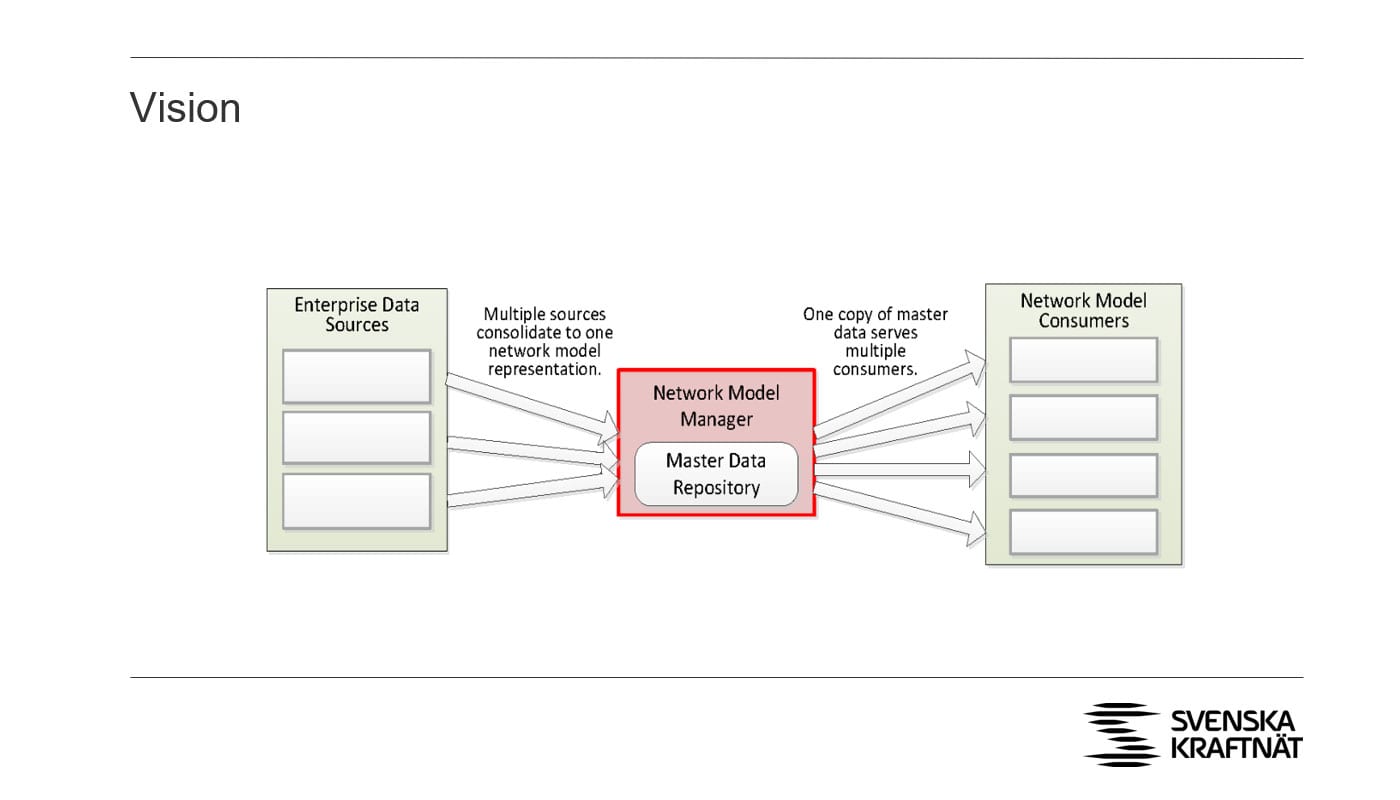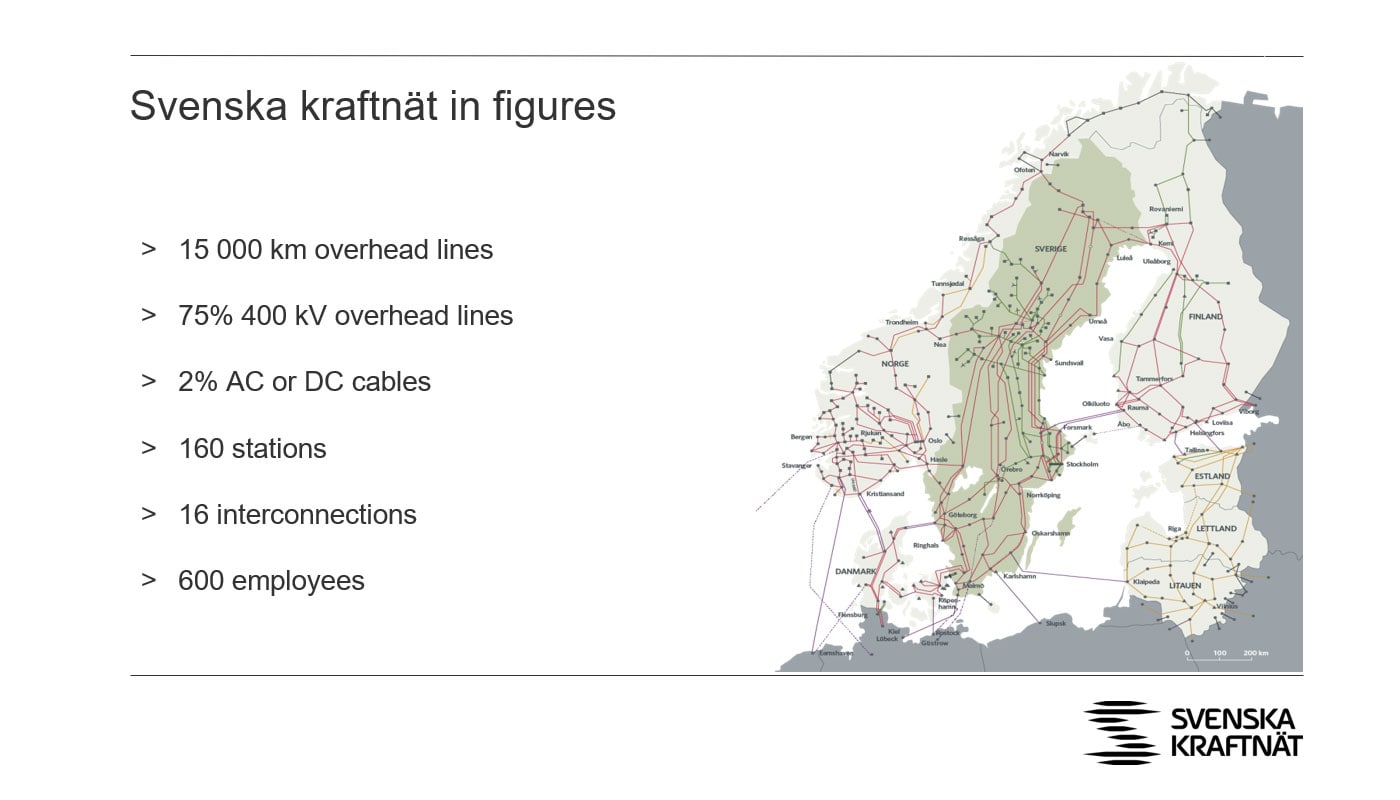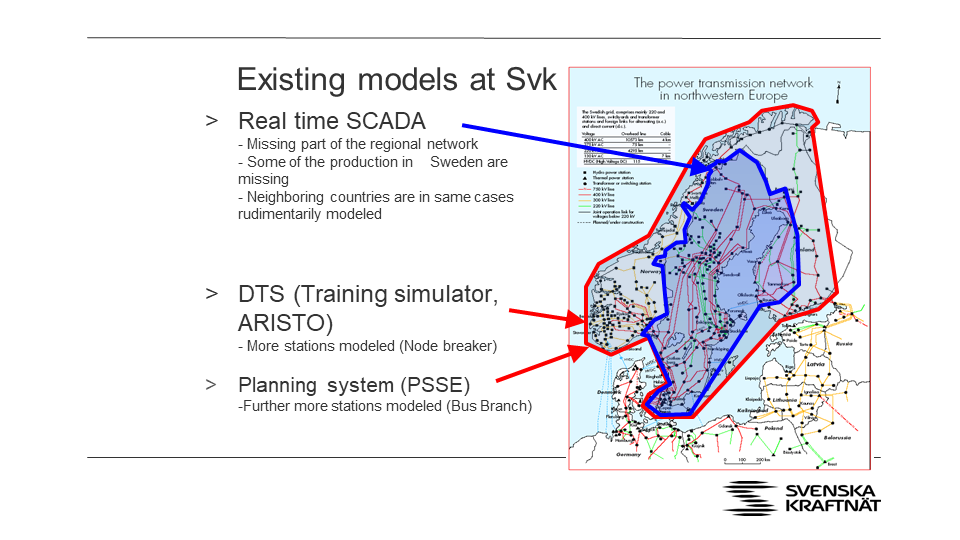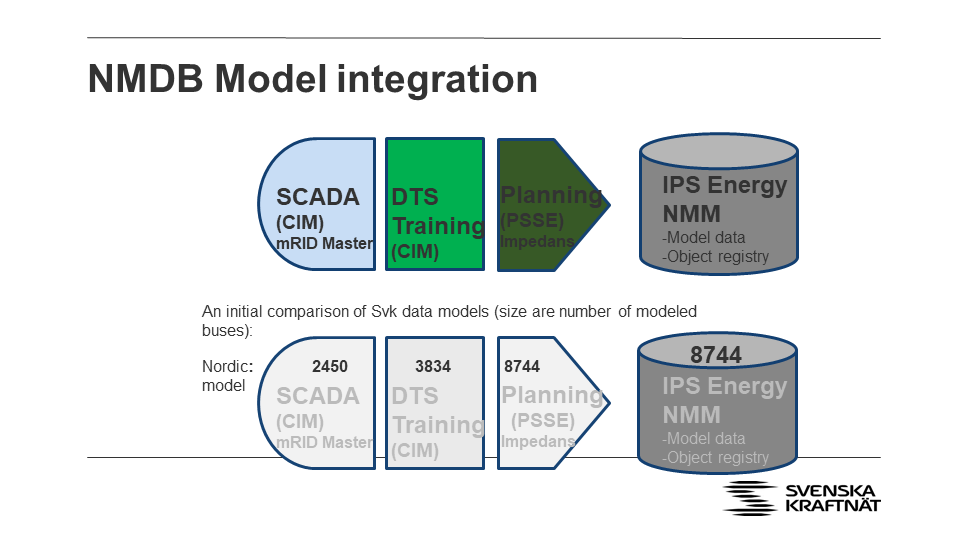Svenska kraftnät and IPS – The Future is Now for NMM
The recent development and imminent implementation by Svenska kraftnät (SvK, Sweden) and IPS of a Network Model Database (NMDB) have provided a vital central system for consolidating SvK’s electrical power network models and model related data, as well as model data from Producers, Distribution- and neighboring Transmission System Operators.

SvK is the Transmission System Operator (TSO) authority, responsible for ensuring the security of supply and that Sweden’s transmission system for electricity is safe, environmentally sound and cost-effective. The Swedish national grid for electricity consists of 15,000 km of power lines, 160 substations and switching stations and 16 connections to other countries.

Historically, the network models at SvK have evolved, based on the business process and updates to various model parts or objects are not automatically validated or included in the models used for decision making or analysis.
SvK has, for several years, been moving towards establishing processes to manage the network model data to avoid parallel work and duplication, and to ensure the quality and availability of the data. The network model data is collected on SVK’s electrical power system assets as well as assets from network utilities and market actors connected directly or impacting SVK’s network indirectly.
SvK’s main objectives for the establishment of a common network model database (NMDB) were as follows:
- Create a solid foundation for SvK to work more effectively and with higher quality with network model data and networks models.
- Create a solid foundation for SvK to ensure the integrity of the network model data assets in the central repository as well as in all target systems.
- To fully support SvK’s management of network model data over time, taking into account the current evolution of the grid and future planned grid expansion projects. Future planned projects include conceptual, preliminary and confirmed investments.
- To support SvK’s compliance with upcoming European network regulations, in the context of grid model exchange.
SvK uses five reference models for key business processes, as follows:
- The Energy Management System (EMS) Model is used for operating the real grid in real-time.
- The DTS (Dispatcher Training Simulator) Model is an extension of the EMS model used for operator training and simulation
- The Planning Model covers the current and planned grid expansions.
- The Short Circuit Planning Model that represents the current grid and includes zero and negative sequence data.
- The Investments Planning Model is used as a basis for investigating various future modifications and expansion scenarios.

All of these models have been captured and are now targeted for central management using the NMDB developed by SvK and IPS in close collaboration.

SvK and IPS continue to work closely to successfully achieve futuristic outcomes for NMM now – well ahead of the game in the Global Energy Supply Industry!
Network Model Management fundamentals at Svenska krafnät
Network Model management is central to coordinating model update from various stakeholders. This feature covers functionality and roles for managing network models and related model parts for various planning and operational needs. This includes functionality for creating, approving, revising and assembling network models (in line with various user access rights). Furthermore, Network Model Management shall also support a well-defined model for model data versioning and modification tracking.
Power System Investment Project Management
This feature covers functionality and roles to manage and capture the evolution of various preliminary and proposed power system investment projects. This includes the capability to detail such investment project over time and to compose different future models and scenarios based on the combination of a number of such projects with the models representing the current state of the grid.
Network Model Validation
Model validation functionality is central for supporting testing and validation of the network model data on import, modification, and export. Validation functionality includes syntax and format validation, consistency checks, topology analysis, and power flow. Furthermore, this functionality shall support automation and definition of custom validation processes that can be executed in batch or on demand.
Modeling Practices and Transformations
Svenska kraftnät has adopted and implemented certain modeling practices. Modeling practices are constrained by the tools currently used by Svenska kraftnät and there is a strong need for the NMDB to assist in enforcing these constraints. Furthermore, this feature would also support exposing universally unique IDs of objects in the NMDB to external applications. Finally, the NMDB would also support implementing name and identifier mapping between those exposed by the NMDB and external applications.
Import and Export
This feature covers a set of functionality that addresses the importing and exporting of data into the NMDB. This includes support for multiple model types (Bus-Branch, Node-Breaker, etc.), format types (e.g. CIM/XML, PSS®E RAW, SEQ, etc.) and the capability to convert, modify or map such data on import and export.
Model Assembling, Workspace and User Interface
This feature specifies basic functionality that would provide users with the state of the art intuitive user interface and workspace to browse visualize and manage network model data. This includes multiple workspaces that support modeling operations in parallel, visualization of electrical grid models and topology loaded from the store or generated on demand.
Automation
This feature specifies basic functionality that would provide users with the ability to automate actions and processes in the NMDB, for instance using scripts. This feature would also allow users to extend the functionality of the system.

